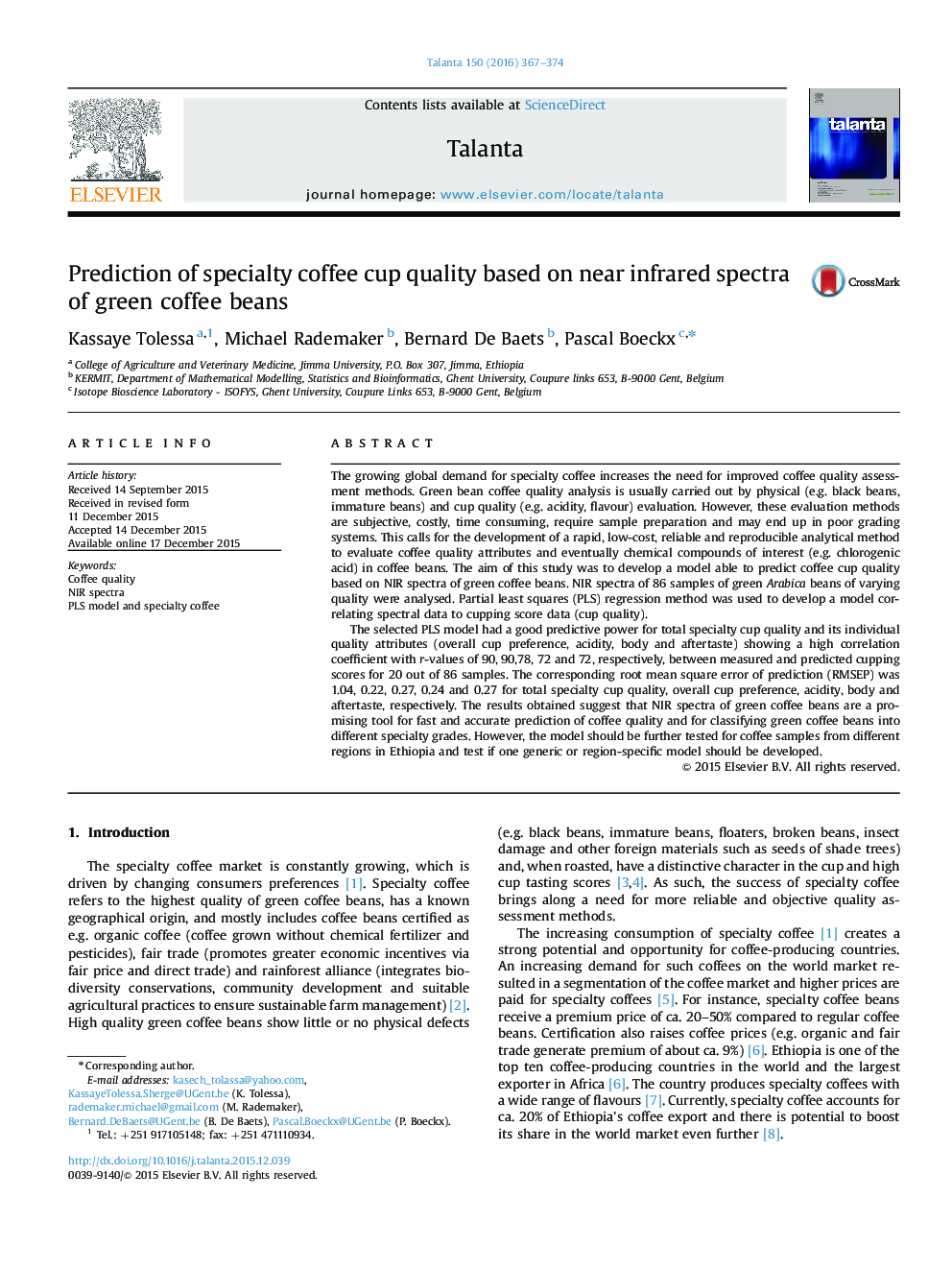| Article ID | Journal | Published Year | Pages | File Type |
|---|---|---|---|---|
| 1242183 | Talanta | 2016 | 8 Pages |
•Models predicting coffee cup quality from NIR spectra of green beans were developed.•The developed models predicted specialty cup quality very well.•Model for overall preference, acidity and body were also proved to be promising.•Total specialty cup quality model is promising to grade coffee to specialty grades.
The growing global demand for specialty coffee increases the need for improved coffee quality assessment methods. Green bean coffee quality analysis is usually carried out by physical (e.g. black beans, immature beans) and cup quality (e.g. acidity, flavour) evaluation. However, these evaluation methods are subjective, costly, time consuming, require sample preparation and may end up in poor grading systems. This calls for the development of a rapid, low-cost, reliable and reproducible analytical method to evaluate coffee quality attributes and eventually chemical compounds of interest (e.g. chlorogenic acid) in coffee beans. The aim of this study was to develop a model able to predict coffee cup quality based on NIR spectra of green coffee beans. NIR spectra of 86 samples of green Arabica beans of varying quality were analysed. Partial least squares (PLS) regression method was used to develop a model correlating spectral data to cupping score data (cup quality).The selected PLS model had a good predictive power for total specialty cup quality and its individual quality attributes (overall cup preference, acidity, body and aftertaste) showing a high correlation coefficient with r-values of 90, 90,78, 72 and 72, respectively, between measured and predicted cupping scores for 20 out of 86 samples. The corresponding root mean square error of prediction (RMSEP) was 1.04, 0.22, 0.27, 0.24 and 0.27 for total specialty cup quality, overall cup preference, acidity, body and aftertaste, respectively. The results obtained suggest that NIR spectra of green coffee beans are a promising tool for fast and accurate prediction of coffee quality and for classifying green coffee beans into different specialty grades. However, the model should be further tested for coffee samples from different regions in Ethiopia and test if one generic or region-specific model should be developed.
Graphical abstractFigure optionsDownload full-size imageDownload as PowerPoint slide
